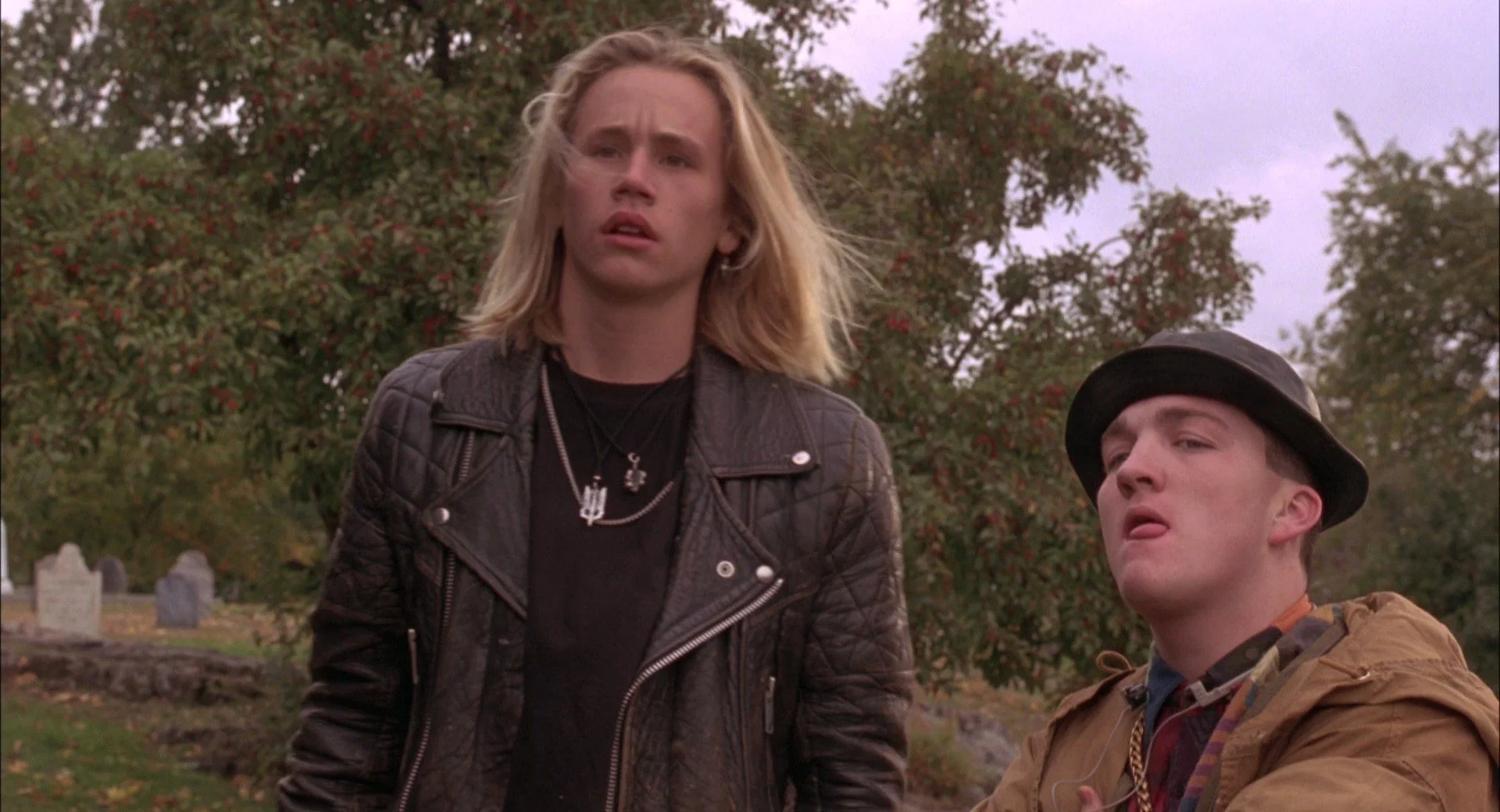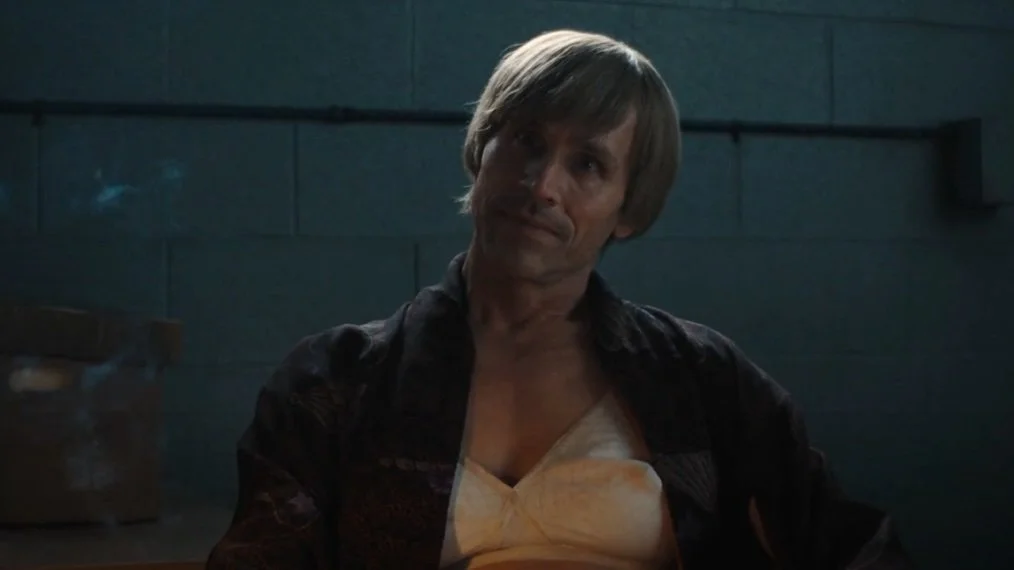Tobias Jelinek Talks Career from Hocus Pocus to Monster and Back
This review was originally published on Film Obsessive.
For many people of a certain generation, Hocus Pocus was an entry into the horror genre. Released in 1993, Hocus Pocus stars Bette Midler, Sarah Jessica Parker, and Kathy Najimy as three evil witches who are accidentally resurrected by a teenage boy (Omri Katz) on Halloween night in Salem, Massachusetts. The film’s initial release didn’t create much fanfare, but Hocus Pocus has since developed into a beloved cult classic. Hocus Pocus was the first feature film role for Tobias Jelinek, who plays one of the film’s bullies.
“Oh, goodness, I don’t think I would change anything.” Jelinek smiles broadly. “Hocus Pocus is interesting. We had David Kirschner as a producer, Mick Garris as the screenwriter. These are incredible giants in the horror genre who birthed Hocus Pocus, which was somewhat inspired by the Salem Witch Trials. Those trials emerged from fiction. From these books that were detailing how witches were mutilating children and how they dismembered them. Those same descriptions started ending up in the accusations in the Salem Witch Trials.”
“One of the popular theories is that these works of fiction, which were pop culture media of the day, had a lot to do with the idea that people are not able to turn away from the disturbing potential of who we are as humans. The witches in Hocus Pocus were a friendly way of beginning to think about some of the more disturbing, darker aspects of who we can be and what humans are capable of.”
“I mean, those witches are taking the lives of children! They’ve got dismembered parts of humans and they’re putting teenagers in cages. I mean, come on, it’s not that far off from darker fare. I do think Hocus Pocus is a softball horror film.”
Courtesy of Walt Disney Entertainment
In the years since Hocus Pocus, Jelinek has appeared in some of the biggest franchises in pop culture. He’s one of the few actors who can say he played a role in both the DC and Marvel universes, as well as starred in juggernauts like Stranger Things, the upcoming Wizards Beyond Waverly Place, and more. What’s clear in talking with Jelinek is that, above all else, he adores the craft of acting.
Jelinek founded The Inspired Actor, an acting lab based on Chekhov’s methods. The key pillars of this acting style are performance, presence, and transformation, all of which Jelinek brings to each of his roles.
“In the Chekhov technique, it begins with inspiration,” Jelinek explains. “You’re not intellectualizing. You’re not even looking at intention. You’re really beginning with the body. It made a lot of sense to me because, when I started working in theater, it was a lot of learning from imagination and the sense of the whole person. The will, the feeling, and the thinking. I ate the Chekhov technique up.”
Jelinek credits his work with the Chekhov method as the reason he was able to so freely and safely fall into the role of real-life serial killer Richard Speck in the latest installment of Ryan Murphy’s Monster anthology. Monster: The Ed Gein Story debuted on Netflix with 12.2 million viewers and remains in the top ten on the streaming service. Jelinek appears in episode eight of the series, with Richard appearing as a fictional pen pal to Ed Gein (Charlie Hunnam). To be able to go to the dark place the role of Richard required of him, Jelinek reflects on his Chekhov teachings.
“The Chekhov technique begins with this simple premise of crossing the threshold out of your ordinary life into artistic space where there’s no judgment, there’s all freedom, and a lot of it is then beginning with the body,” Jelinek explains. “Every movement becomes an artistic movement. It really allowed me, with Speck, to go there quickly and without any judgment.”
“With Speck, I immediately had a gravitation toward this idea of power, that the world is all mine, right? You see that even in the prison. There’s this sense of ownership. It’s absolute debauchery, but you see the power that’s been accumulated and developed. There’s also the transformation of his body and how he lures all these other men into his world. It all begins with the body.”
Courtesy of Netflix
“Then, of course, we move into everything we love about story,” continues Jelinek. “Atmosphere is huge. What’s the atmosphere of the entire story? Of that scene? How this specific story is being told and then Speck’s role in that, it really allowed me to connect to the larger themes of what I think the show is asking and what it’s looking at.”
“We’re looking at this legacy of serial killers. Murphy is using real people and looking at the psyches of people we consider monsters. Charlie Hunnam did such an incredible, fantastic job of looking at the humanity of Eddie. He’s not saying we should empathize with a serial killer. It’s looking at humanity.”
Richard Speck killed eight student nurses on the night of July 13–14, 1966. He was caught in part because of Corazon Amurao, a fellow student nurse who hid under the bed during the attack. Speck was convicted of all eight murders less than a year later and sentenced to death, but because the death penalty was effectively ruled unconstitutional in 1972, Speck was resentenced to 400 to 1,200 years in prison.
“My scenes were shot at Stateville Correctional Center where Speck was incarcerated,” states Jelinek. “I went deep into the court files, looked at any video footage I could get my hands on. Scrubbed the internet. There’s the initial video that was released in 1995, I believe, which was four years after his passing. It’s really what shocked the world because they saw how he was living, what he had become, and the access he had in a maximum security prison.”
Courtesy of Tobias Jelinek
“He’s a fascinating person because he really did not engage with the press. He was very strategic and manipulative in terms of when he did. He only did one interview with Chicago Tribune’s Bob Greene. It was ten years after he had been in prison, so in 1978 he chose wisely. Bob Greene was the rock star of the Chicago Tribune. When you read the interview, it’s disturbing not only because it’s when he confesses to the world, but also it reads like a rock star interview. In a certain sense, it’s very Esquire. It’s filled with the movies and celebrities that he’s fascinated with, and what he watches.”
“We’ve forgotten it, but his was really the first televised manhunt of a serial killer because it happened in 1966,” Jelinek goes on. “This was three years after John F. Kennedy, you know? We were really in this phase of this loss of innocence. Speck emerged as this Antichrist and the manhunt is so horrific because all of the pieces are there. You have this massacre of eight nurses and one nurse who was hiding under a bed, who was able to clearly identify him.”
“They started looking for him and it was all over television. He was hiding down in Skid Row and tried to kill himself once it looked like the cops were putting the pieces together. He was rushed to a hospital where a resident physician wiped the blood and mud off his forearm and saw a tattoo that said “born to raise hell.” He said, oh my God, this is the guy they’re looking for.”
“This was shortly after the Miranda Act, so the media, the presence of television, how it is affecting justice, and how we deal with criminals was what they were trying to figure out. They had to move them out of Chicago, delaying the trial. When it finally happened, it was like 45 minutes in front of a jury with the insurmountable evidence and he was found guilty.”
While the next season of Ryan Murphy and Ian Brennan’s anthology series has been announced to be focused on Lizzie Borden, Jelinek believes there are aspects of Speck’s life that would make for an interesting edition. If the creator duo called him tomorrow and asked if he would return to the role of Speck, Jelinek says that he has no choice but to say yes.
“Oh, yeah, we have to.There’s plenty of conjecture about towns he would leave or people who were found dead. Or the families that were trying to help him,” Jelinek explains. “Monster is such an interesting show because it’s not only dealing with Ed Gein, but with the beginning of our fascination with serial killers and pop culture converging, right?”
“Before Alfred Hitchcock made Psycho, our monsters were the Universal Monsters. It was Dracula, right? Frankenstein. After Ed Gein, we became the monsters,” Jelinek states. “That’s where this fascination really took root and the question of how unhealthy it is and why we can’t look away started to come about. It’s beautiful work Charlie did in this show where Ed breaks down because it’s all over now. It’s a remarkable performance when he’s human and you see his humanity. If he had received help earlier, the question is, would it have turned out different, you know?”
Support Your Local Film Critic!
~
Support Your Local Film Critic! ~
Beyond the Cinerama Dome is run by one perpetually tired film critic
and her anxious emotional support chihuahua named Frankie.
Your kind donation means Frankie doesn’t need to get a job…yet.
Follow me on BlueSky, Instagram, Letterboxd, YouTube, & Facebook. Check out Movies with My Dad, a new podcast recorded on the car ride home from the movies.



